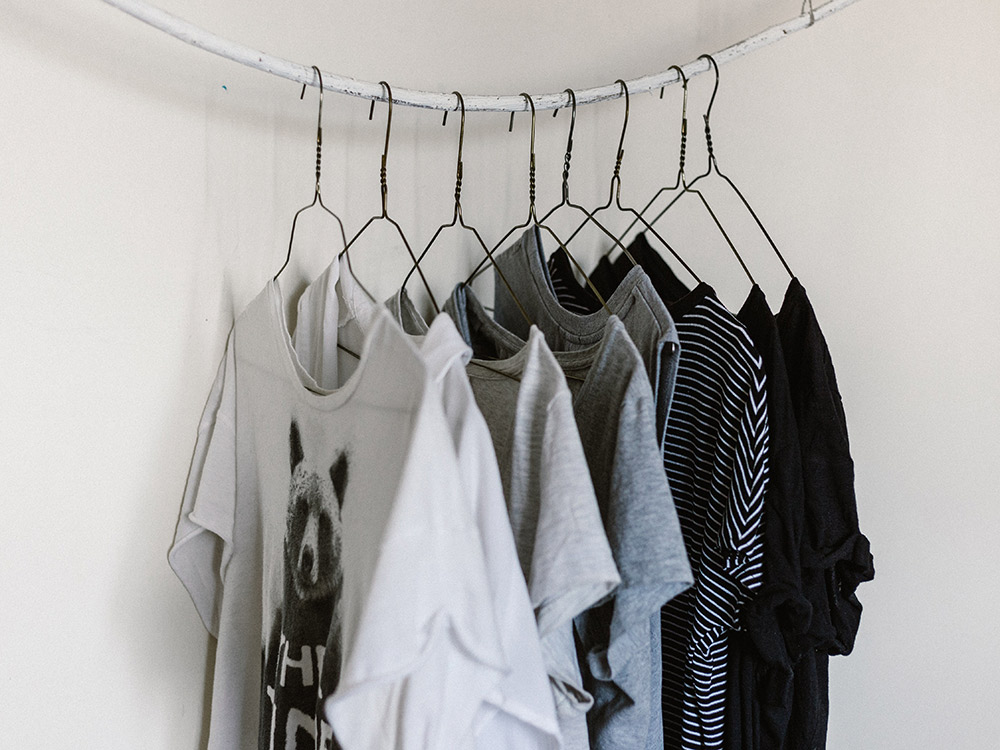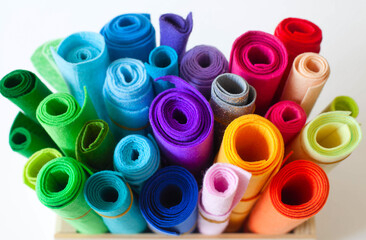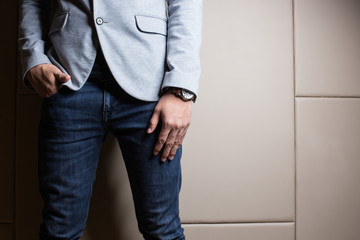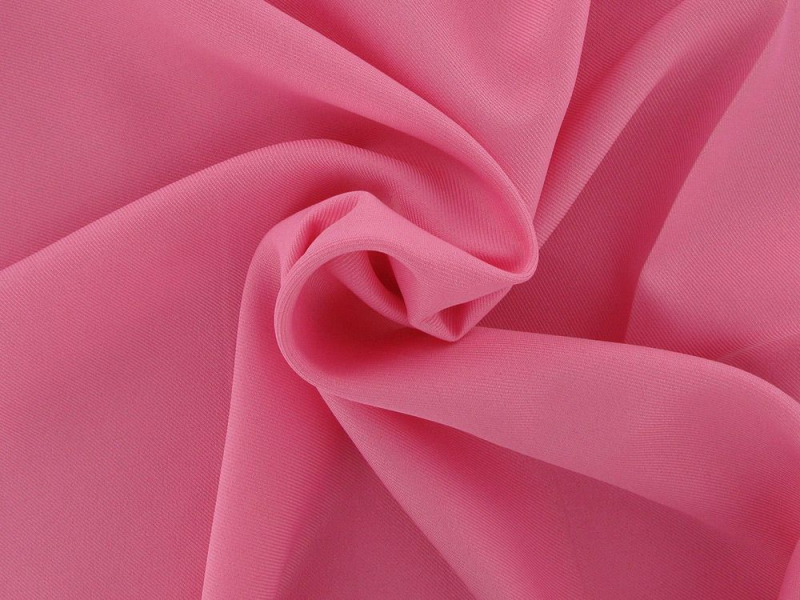Stretch Fabrics and How to Sew Them
Stretch fabric is used in everything from underwear to sports clothing. Its elastic fibres offer a versatile material and unique properties that benefit the wearer. From increasing resistance of a garment to enhancing water absorbency, stretch fabric is a top choice for many clothing producers.
Although stretchy material may appear similar in form, there are several ways that material stretches. Take a look at how below:
One-Way Stretch
One-way stretch is often used in knitwear and indicates a low-level of stretch (between 0% - 25%).
Two-Way Stretch
Two-way stretch material consists of two types of stretch - warp and weft stretch. In some cases, it is referred to as one-way stretch. This type of fabric does not return to its original shape, which makes it unsuitable for sports clothing.
Four-Way Stretch
Four-way stretch fabric can extend in different directions such as longways and crossways. This material makes it a top choice for activewear as it has better elasticity and springs back to its original shape.
Types of Stretch Fabric
As different fabric can be used depending on the garment type - take a look at our handy guide on the most popular fabric choices and their characteristics.
100% Cotton Jersey
Cotton jersey is a single-knit cotton material. It is well-known for its soft finish and stretch. This type of fabric has a natural elasticity so doesn’t require extra stretch from additional elastane. Cotton jersey is used in many garment types with t-shirts and leggings being top of the list.
Cotton Jersey with Elastane
This type of fabric has a two-way stretch composition and its finish is smooth and soft. This material usually contains between 2% - 5% elastane. The movement in the fabric is due to its production method – looping. As cotton allows the skin to breathe, it is used in many garments such as t-shirts, tops, dresses, skirts, cardigans and leggings.

Stretch Cotton Poplin
This super-soft material has an opaque appearance and often contains an element of elastane or lycra (between 2% - 5%). Its breathable properties make it an ideal choice for summer dresses and lighter clothing, including blouses and shirts.
Stretch Velvet
Stretch velvet is often made from polyester or cotton and is soft and durable. You may also find crushed velour fabrics that offer a similar look. This material is commonly used for dresses, jackets and sweatshirts.
Stretch Tulle
Tulle is made of lightweight mesh fabric and offers a fluid drape in garments. It has a four-way stretch and is produced with elastane to make it durable. It’s the perfect dressmaking fabric and a popular choice for beautiful underlays and inserts. It can also be used on necklines and hems for an elegant touch.
Ponte Roma Jersey Fabric
Ponte Roma is also known as Ponte Di Roma and originates from Italy. It is a double knit jersey composition and is generally made with a mix of polyester, viscose and elastane. It is less stretchy than other jersey materials and holds its shape well. It is commonly used for a variety of garments, including jackets, dresses, tops, skirts and trousers.
Viscose Jersey
Viscose stretch jersey fabric is a lightweight and versatile material that is an excellent alternative to cotton. It drapes well and is soft against the skin. Many viscose garments feature a mix of cotton and synthetic fibres that make it a top choice for prints and bright colourways. This fabric is used in many clothing items including blouses, skirts and summer dresses.
Lurex Knit
Lurex is a transparent material that adds a touch of glitter to the fabric. It is woven into the structure to present a metallic finish. Lurex has a two-way stretch and is used in clothing and homeware such as curtains and bed linen.
Lycra
Lycra which is also known as spandex or elastane is a super elastic synthetic fabric which can stretch up to six times it's original size and go back to it's original state when released. It is the perfect fabric for many types of activewear from dance to cycling and swimming to running.

Stretch Satin
This fabric is soft and lightweight for comfortable wear. Silk satin is an ideal choice for luxury clothing and offers a subtle sheen to skirts and blouses. Its beautiful draping is also used for evening gowns and occasion wear as it creates a lustrous appearance to garments. Its breathable properties also make it the perfect choice for lining clothing as the material sits smoothly against the skin.
Another satin silk fabric type is silk crepe. This type of material is opaque and in comparison, has a matt sheen. The textile also holds its shape and has a perfect drape, which makes it a top choice for formal attire.
Stretch cotton fabrics and the examples above are all fantastic materials to wear. However, there are often some challenges when it comes to sewing them.
6 Top Tips for Sewing with Stretch Fabric
1) Don’t stretch the fabric when cutting
It’s essential to place your fabric on a flat surface when you’re cutting it. If you pull or stretch the material during this process, you could experience issues when making your garment.
2) Use a stretch stitch on your sewing machine
Most modern sewing machines will allow you to use a stretch stitch on the seam. However, zigzag stitches are also a great way to ensure your garment stretches at the seams. If you’re using a serger, it’s a good idea to use an overedge stitch to make sure your hems and seams are secure and stretchy.
3) Reduce your sewing machine’s natural pull
To do this, you need to sew in the direction that has the least stretch. This may not be possible with a 4-way stretch where each direction moves equally. However, trying to reduce pull will ensure an even finish.
4) Use a ballpoint or stretch sewing machine needle
If you are sewing stretchy fabric, using a ballpoint needle is a must. This type of needle is designed to work with the loops of the material. If you use a sharp needle, you will undoubtedly notice the difference and frustration when trying to sew your garment. It may also cause damage to the fabric.
You can also use ballpoint needles to secure the fabric before you sew it to help keep it in place.
5) Choose a polyester thread
Polyester thread has a slight stretch in it which makes it the perfect complement to your stretchy fabric. Cotton thread can be a little rigid and can be more noticeable at the seams.
6) Reduce edge curling
Some stretchy fabrics will naturally want to curl once they are cut. To reduce this frustration, simply iron the edges to flatten them back into shape.
Working with stretchy fabric is an ideal choice for a variety of garments. The properties of these popular materials create a versatile and fun way to make clothing. So, take a look at the range of options available to start your next creative project.






































